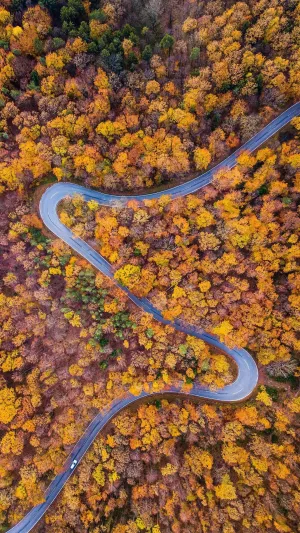The Earth's diverse ecosystems give rise to a variety of forest types, shaped by distinct climate and soil conditions.
These forests can be broadly categorized into five main types: tropical rainforests, seasonal tropical forests, temperate deciduous forests, temperate evergreen forests, and boreal forests.
Forest
Video: Nature Journal
<h3>1. Tropical Rainforest:</h3>
Tropical rainforests thrive near the equator, characterized by year-round rainfall and a humid climate. Dominated by broadleaf trees, these forests boast a rich diversity of tree species and complex ecosystems. In Africa, the Congo Basin hosts vast stretches of tropical rainforest, while South America's Amazon Basin is renowned for its lush rainforests. Asia's rainforests span from Sri Lanka to Vietnam and the islands of Southeast Asia.
<h3>2. Seasonal Tropical Forest:</h3>
Seasonal tropical forests, found in tropical regions, experience alternating dry and wet seasons. Comprising both evergreen and deciduous broadleaf species adapted to seasonal changes, these forests exhibit a simpler structure and fewer plant species compared to tropical rainforests. They are prevalent across regions such as Eastern Java, Wallacea, the Indian subcontinent, and Indochina.
<h3>3. Temperate Deciduous Forest:</h3>
Temperate deciduous forests, also known as summer green broadleaf forests, undergo distinct seasonal changes, with leaves shedding in winter and regrowth in summer.
These forests predominantly feature deciduous trees and timbered plants, thriving in regions with warm summers, mild winters, and moderate rainfall.They are commonly found in temperate climates, including parts of North America, Europe, and Asia.
<h3>4. Temperate Evergreen Forest:</h3>
Temperate evergreen forests comprise evergreen dicotyledonous trees thriving in humid coastal areas of temperate regions. Spanning latitudes 35° N to 55° N in the eastern hemisphere, these forests are prevalent in regions such as the Yangtze River basin in China, southern Japan, southeastern United States, southeastern Australia, and southeastern Africa.
<h3>5. Boreal Forest:</h3>
Boreal forests thrive in cold, dry, continental climates, spanning from the cold to sub-cold zones predominantly in the Northern Hemisphere. With average temperatures ranging from 10-19℃ in the hottest months to -52℃ in the coldest, these forests form a vast belt encircling the Earth's northern regions.
Each forest type plays a vital role in supporting biodiversity, regulating climate, and providing ecosystem services essential for human well-being. By understanding the distinct characteristics of these forests, we can better appreciate the intricate web of life that sustains our planet.





